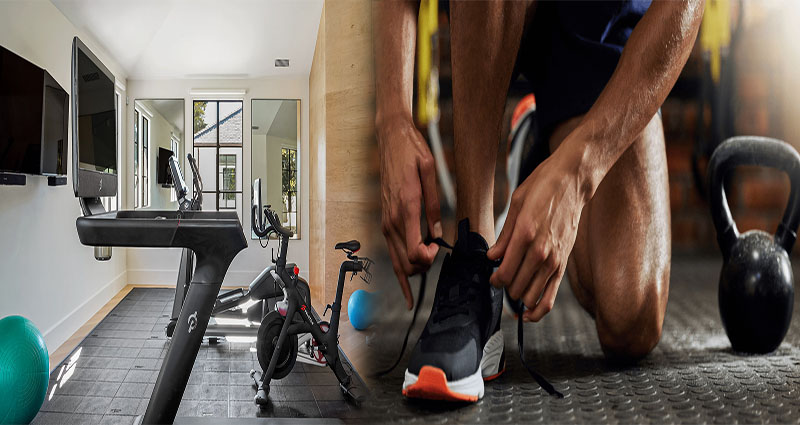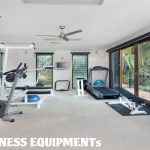Whether you want to lose weight, tone up, or stay in shape during the winter months, a home gym is a great investment. With all of the equipment you need in one place and at your fingertips, you can get in shape whenever and wherever it’s most convenient for you. But finding the right equipment for your needs isn’t as simple as walking into any store and buying what looks good on the shelf—there are many considerations to make when picking out your home gym. Home gyms come with a wide variety of features, from cardio machines all the way down to dumbbells, so it’s important that you take some time to think about what exactly it is that would benefit you most while working out at home. In this article we’ll walk through how to find an effective home gym based on your specific needs!
Decide if a home gym is right for you.
- How much time do you have?
If you’re a busy person, a home gym can be a great option. You can get in your workout without having to worry about traveling or finding an open machine at the local gym.
- What kind of equipment is available at your local gym?
If there are specific machines that are important for your workout routine and they aren’t available at the local gym, then buying your own may be worth it. For example, if you need an elliptical machine for cardiovascular workouts but don’t have access to one nearby, then getting one might make sense for you–even though it takes up space in your house!
Identify your goals.
The first step to finding the best home gym is to identify your goals. While some people may want to lose weight and others might be looking to gain muscle, most people probably want to improve their cardiovascular health.
The best way to do this is by getting a heart rate monitor that can track how many calories you burn during each workout. A good rule of thumb is if you’re working out at an intensity that causes your heart rate reach 80% or higher of its maximum capacity (220 minus age), then you’re burning enough calories for weight loss or muscle building purposes!
Consider your space and budget.
Before beginning your search for a home gym, it’s important to consider your space and budget. If you have the room and money to spend on equipment, then by all means go for it; however, if this isn’t the case for you, there are still ways that you can get fit without breaking the bank or living in squalor.
The first step is assessing how much space is available in your home–doors and corners can be used as makeshift stations where one piece of equipment could occupy multiple spaces depending on how much room they take up (like TRX bands). Also consider what items are essential versus optional when choosing which pieces of exercise equipment will work best with each other within specific areas of interest like cardio vs strength training vs stretching/ flexibility exercises etcetera…
Find the right equipment for your needs.
Once you’ve decided to buy a home gym, the next step is to find out what kind of equipment will best fit your needs. The easiest way to do this is by checking out the equipment at a local gym. You can also try buying a few pieces of equipment and then adding more as needed.
One piece of advice we’d give anyone who wants to start working out at home: don’t skimp on shoes! If anything’s going to hurt your feet during exercise, it’s going to be those clunky sneakers that came with your treadmill or elliptical machine (if those even came with any). Get yourself some high quality running shoes from an athletic store like Nike or Adidas — they’ll make all the difference in comfort when working out!
Learn proper form and safety precautions.
Before you start any workout, it’s important to learn proper form for each exercise. This can help prevent injury and increase your performance in the gym.
- Learn how to properly lift weights: Proper lifting technique is essential for avoiding injury and maximizing results from your workouts. For example, when doing bicep curls with dumbbells or barbells (but not machines), the key is keeping your upper arms stationary while letting gravity do most of the work–you shouldn’t have to use muscle power to lift up a weight. If you feel strain in other parts of your body like your back or shoulders during a lift, try adjusting where you place them on top of each other so that they’re more comfortable before continuing with an exercise like this one.*
- Know how much rest time between sets: A general rule of thumb is 30 seconds per minute spent exercising; however this may vary depending on personal fitness level.* Stretch before working out: Stretching helps warm up muscles before physical activity begins so they’re less likely to get injured during exercise.* Get enough sleep after working out!: Studies show getting 7 hours per night helps build muscle mass faster than sleeping only 6 hours per night
A home gym can be a great investment in your health and fitness, but only if you choose the right one!
A home gym can be a great investment in your health and fitness, but only if you choose the right one!
First things first: when shopping for a home gym, there are many factors to consider. What equipment do you want? How much space do you have? What’s your budget? Are there any special considerations that might affect how well the equipment will work at home (e.g., small children)? Once these questions have been answered, it’s time to start thinking about form and safety precautions–because even with all of this preparation, injuries can still happen if proper technique isn’t practiced. Finally, once all of those details have been taken care of (and hopefully before any injuries occur), identify what goals are most important for achieving success in your fitness journey–and make sure those goals align with what type(s) of workouts best suit them!
The home gym is a great investment, but it’s not right for everyone. If you’re interested in getting started with one, start by asking yourself some questions: What do I want to accomplish with this equipment? How much space do I have available? What kind of budget can I spend on this project? Once you have some answers, then it will be much easier to find the perfect set up for your needs!












